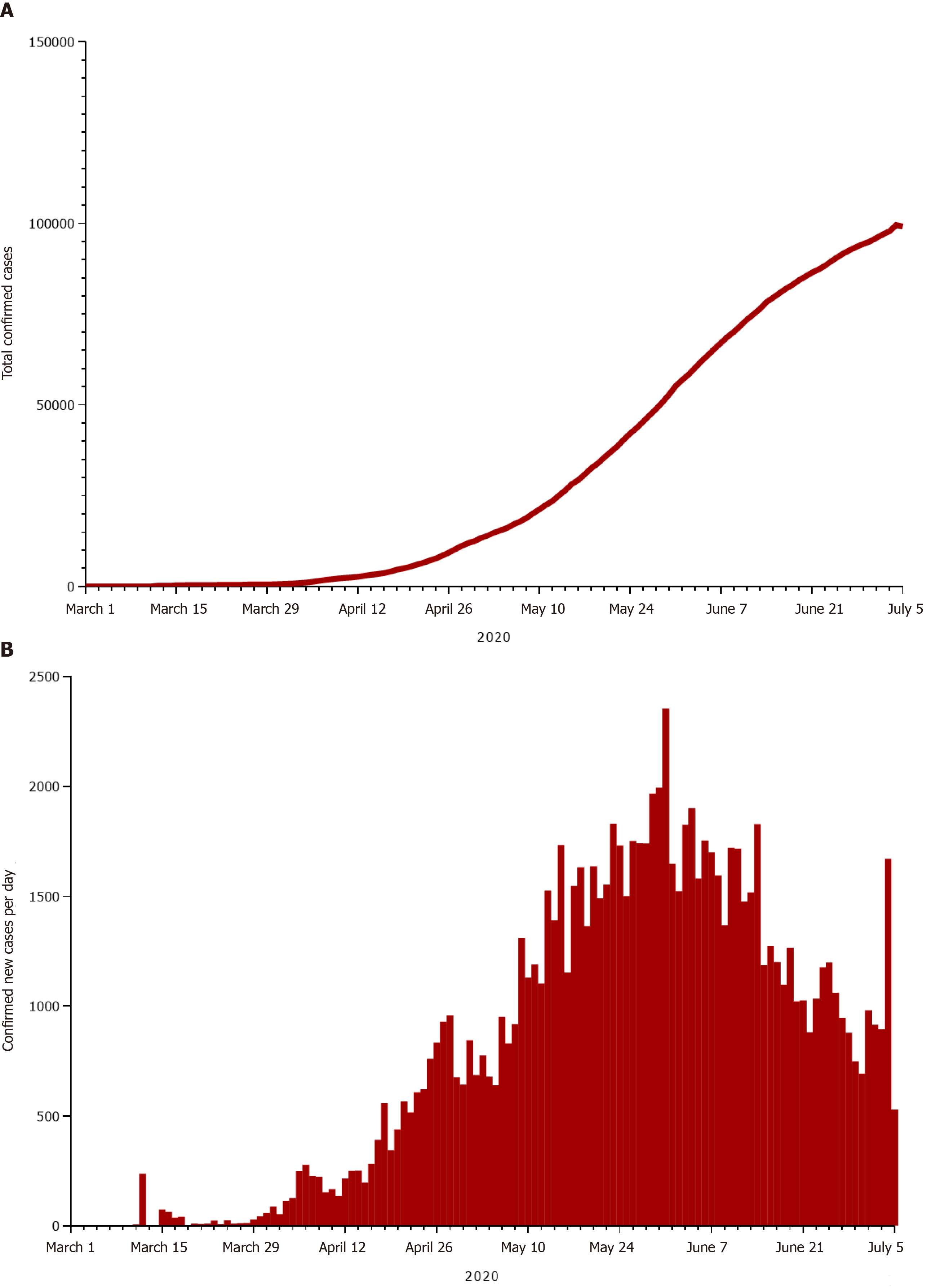Copyright
©The Author(s) 2020.
Figure 1 Total confirmed cases[1] and daily confirmed cases of COVID-19 in Qatar[8].
A: Total confirmed cases; B: Daily confirmed cases. A: Citation: Worldometer. Covid-19 coronavirus pandemic. [cited July 6, 2020]. Available from: https://www.worldometers.info/coronavirus/#countries; B: Citation: World Health Organization. Coronavirus disease (COVID-2019) situation reports. [cited July 6, 2020]. Available from: https://www.who.int/emergencies/diseases/novel-coronavirus-2019/situation-reports/.
Figure 2 Renal replacement therapy modalities used in 131 cases of coronavirus disease 2019-related acute kidney injury in the intensive care unit between March 1 and July 3.
CRRT: Continuous renal replacement therapy; ICU: Intensive care unit; RRT: Renal replacement therapy; SLED: Sustained low-efficiency dialysis.
Figure 3 Geographical distribution of renal replacement therapy facilities in Qatar before and during the coronavirus disease 2019 pandemic.
The values in red squares represent the number of haemodialysis stations at that centre (adapted from reference[5] with permission). Citation: Al-Malki H, Rashed AH, Asim M. Renal replacement therapy in Qatar—Past, present and future. Open J Nephrol 2018; 8: 42-55. Copyright© The Authors 2018. Published by Scientific Research Publishing.
- Citation: Asim M, Alkadi M, Hamad A, Othman M, Abuhelaiqa E, Fituri O, El-Madhoun I, Al-Malki H. Restructuring nephrology services to combat COVID-19 pandemic: Report from a Middle Eastern country. World J Nephrol 2020; 9(2): 9-17
- URL: https://www.wjgnet.com/2220-6124/full/v9/i2/9.htm
- DOI: https://dx.doi.org/10.5527/wjn.v9.i2.9















